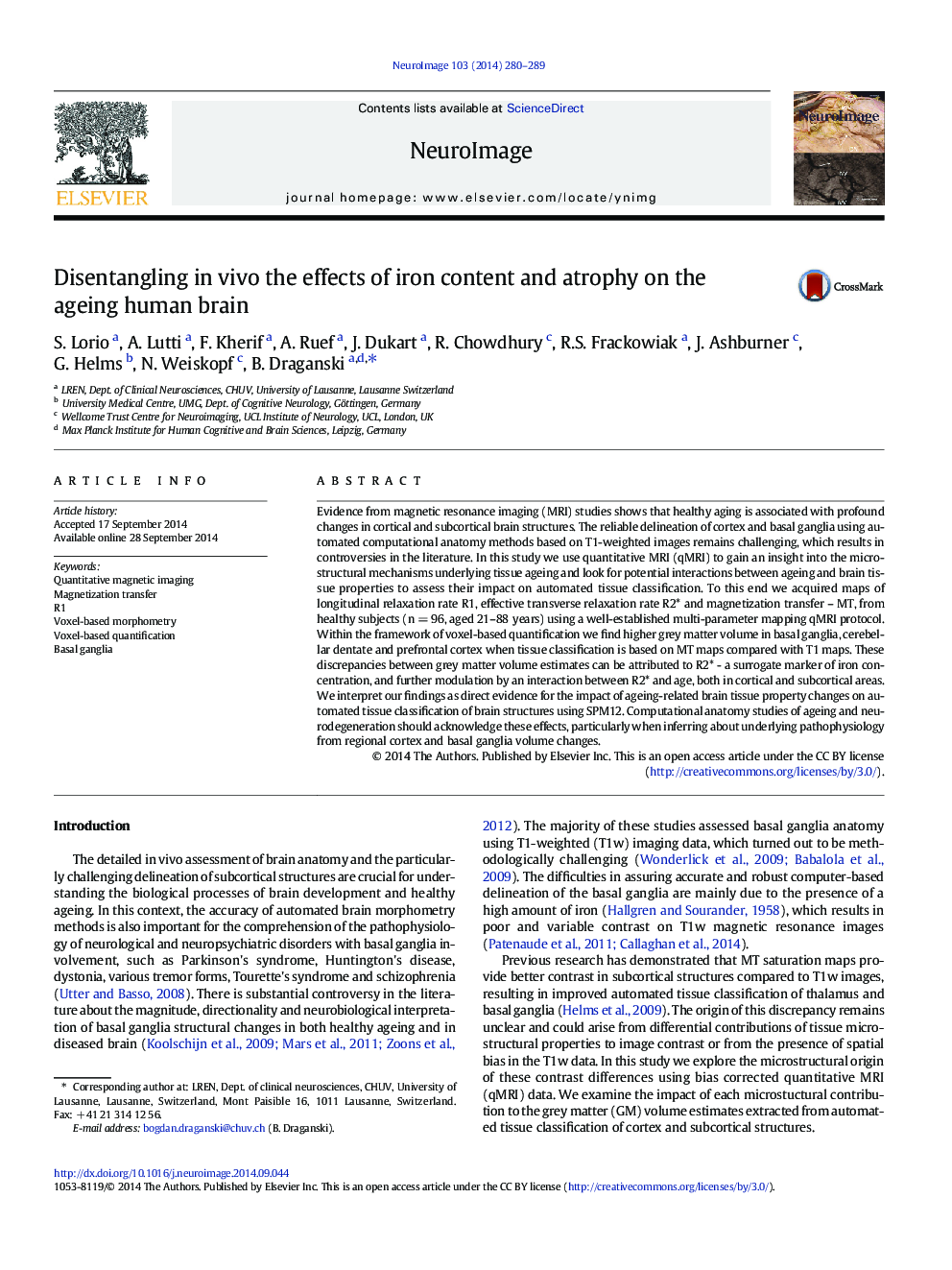| Article ID | Journal | Published Year | Pages | File Type |
|---|---|---|---|---|
| 6025747 | NeuroImage | 2014 | 10 Pages |
â¢We acquire quantitative bias free whole-brain maps of MT, R1 and R2* parameters.â¢Grey matter volume estimation based on MT maps is higher than the R1-based in specific cortical and subcortical areas.â¢Differences in grey matter volume estimations are correlated with iron concentration and further modulated by age.â¢Iron decreases locally the grey-white matter contrast in R1 but not in MT maps.
Evidence from magnetic resonance imaging (MRI) studies shows that healthy aging is associated with profound changes in cortical and subcortical brain structures. The reliable delineation of cortex and basal ganglia using automated computational anatomy methods based on T1-weighted images remains challenging, which results in controversies in the literature. In this study we use quantitative MRI (qMRI) to gain an insight into the microstructural mechanisms underlying tissue ageing and look for potential interactions between ageing and brain tissue properties to assess their impact on automated tissue classification. To this end we acquired maps of longitudinal relaxation rate R1, effective transverse relaxation rate R2* and magnetization transfer - MT, from healthy subjects (n = 96, aged 21-88 years) using a well-established multi-parameter mapping qMRI protocol. Within the framework of voxel-based quantification we find higher grey matter volume in basal ganglia, cerebellar dentate and prefrontal cortex when tissue classification is based on MT maps compared with T1 maps. These discrepancies between grey matter volume estimates can be attributed to R2* - a surrogate marker of iron concentration, and further modulation by an interaction between R2* and age, both in cortical and subcortical areas. We interpret our findings as direct evidence for the impact of ageing-related brain tissue property changes on automated tissue classification of brain structures using SPM12. Computational anatomy studies of ageing and neurodegeneration should acknowledge these effects, particularly when inferring about underlying pathophysiology from regional cortex and basal ganglia volume changes.
